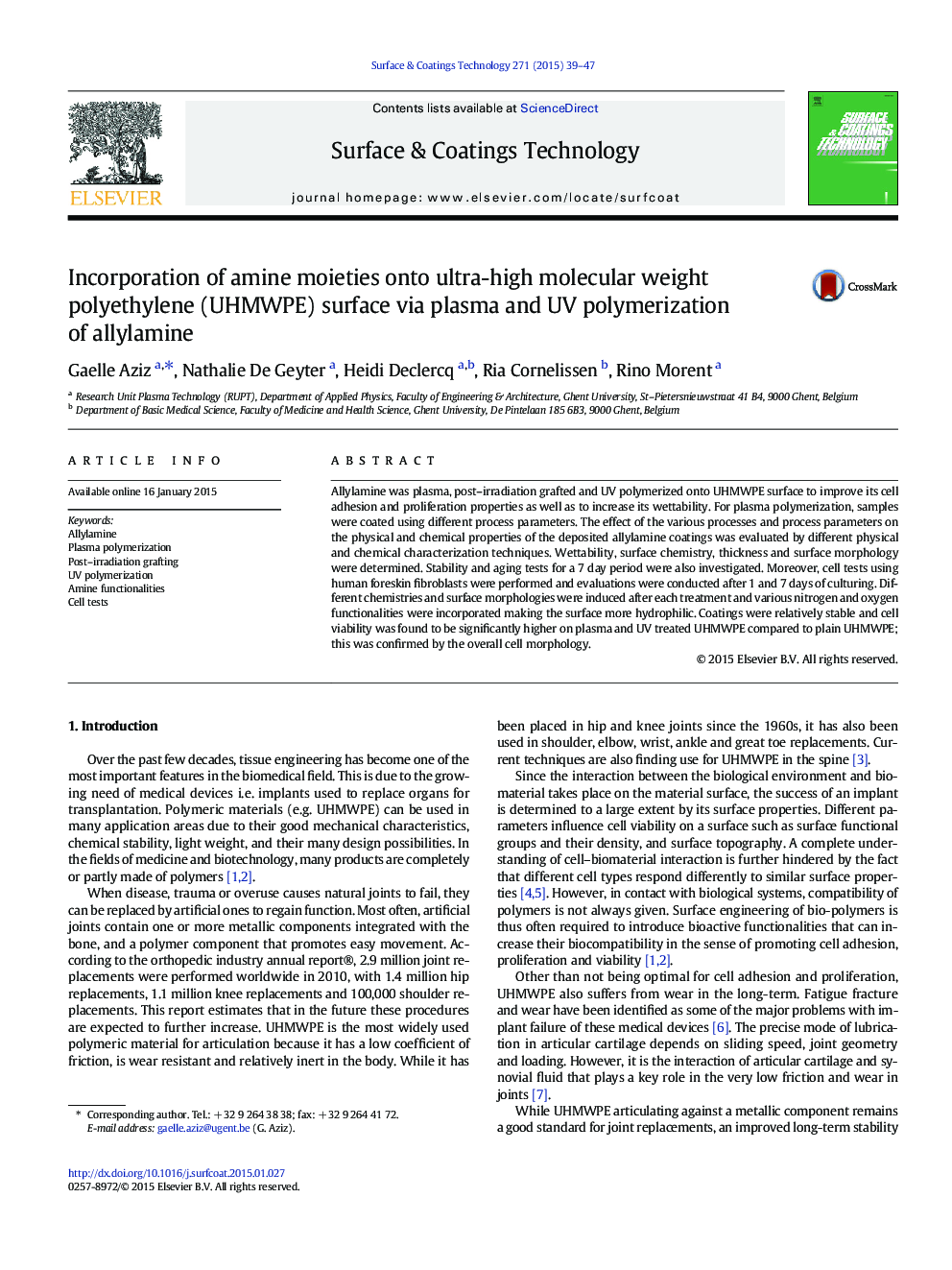| Article ID | Journal | Published Year | Pages | File Type |
|---|---|---|---|---|
| 1656884 | Surface and Coatings Technology | 2015 | 9 Pages |
•Plasma and UV based techniques are used to deposit nitrogen containing films.•Chemical composition and surface topography significantly differ for each treatment.•The obtained nitrogen–containing polymers are stable in a dry and humid environment.•All treatments significantly improve cell adhesion and proliferation.
Allylamine was plasma, post–irradiation grafted and UV polymerized onto UHMWPE surface to improve its cell adhesion and proliferation properties as well as to increase its wettability. For plasma polymerization, samples were coated using different process parameters. The effect of the various processes and process parameters on the physical and chemical properties of the deposited allylamine coatings was evaluated by different physical and chemical characterization techniques. Wettability, surface chemistry, thickness and surface morphology were determined. Stability and aging tests for a 7 day period were also investigated. Moreover, cell tests using human foreskin fibroblasts were performed and evaluations were conducted after 1 and 7 days of culturing. Different chemistries and surface morphologies were induced after each treatment and various nitrogen and oxygen functionalities were incorporated making the surface more hydrophilic. Coatings were relatively stable and cell viability was found to be significantly higher on plasma and UV treated UHMWPE compared to plain UHMWPE; this was confirmed by the overall cell morphology.
